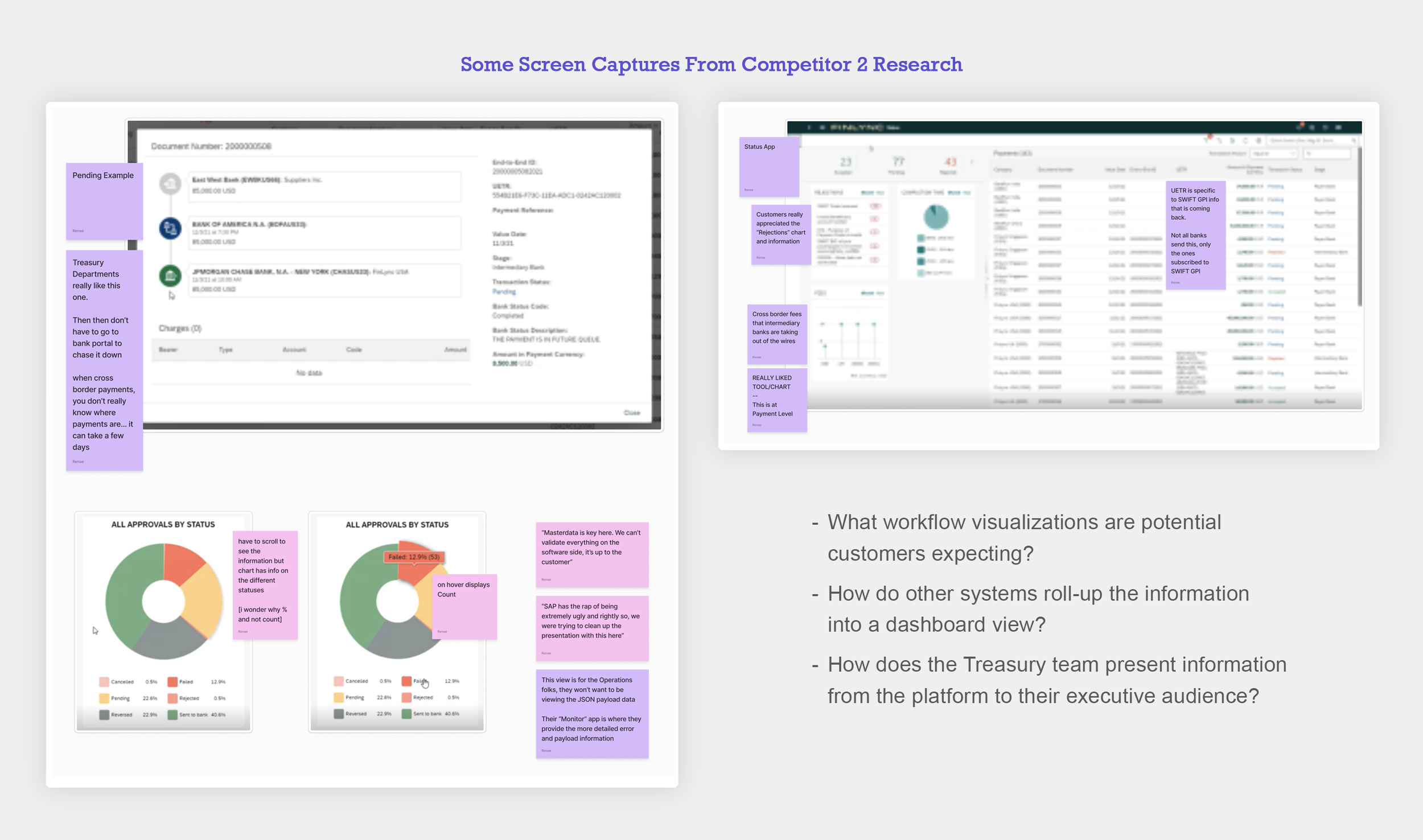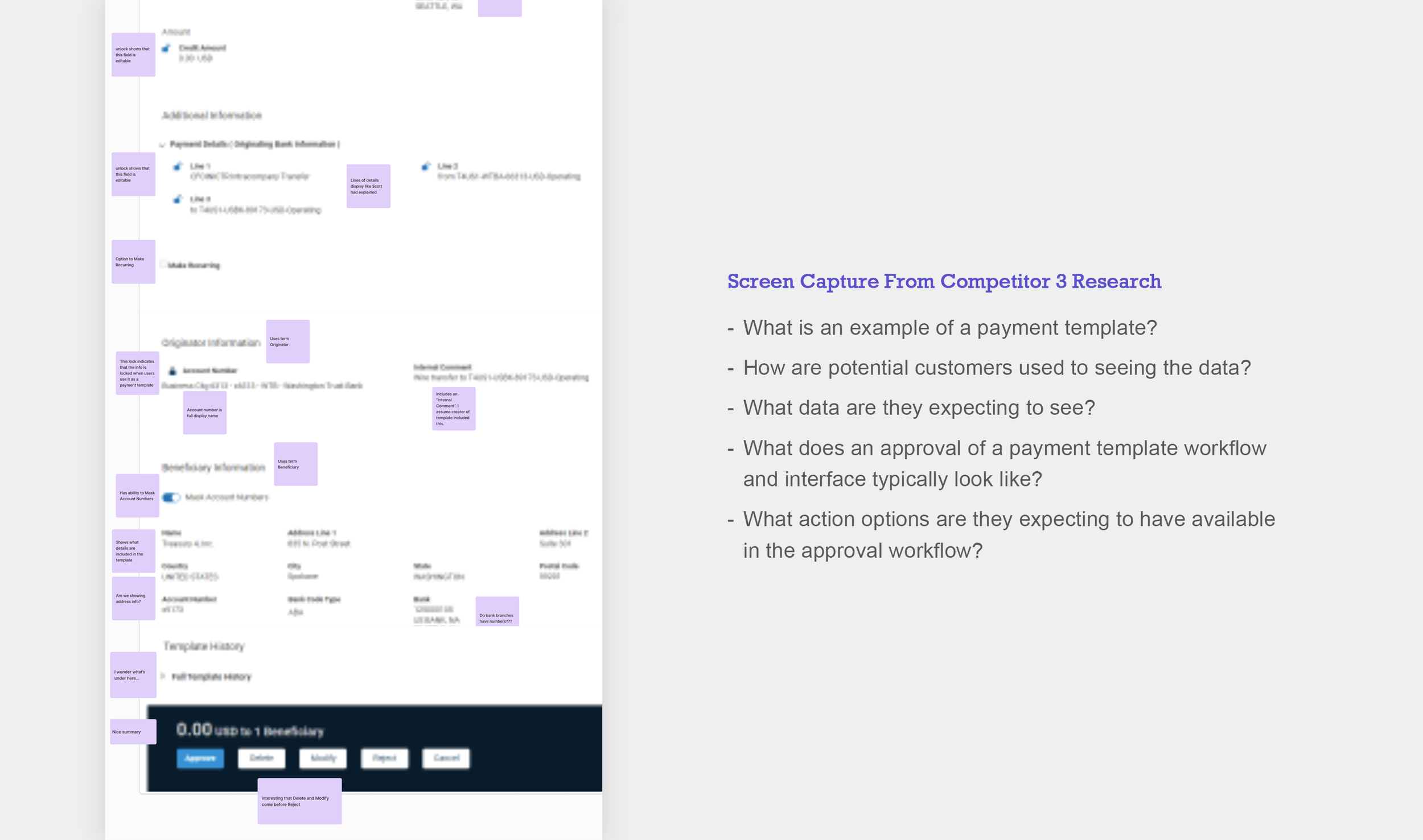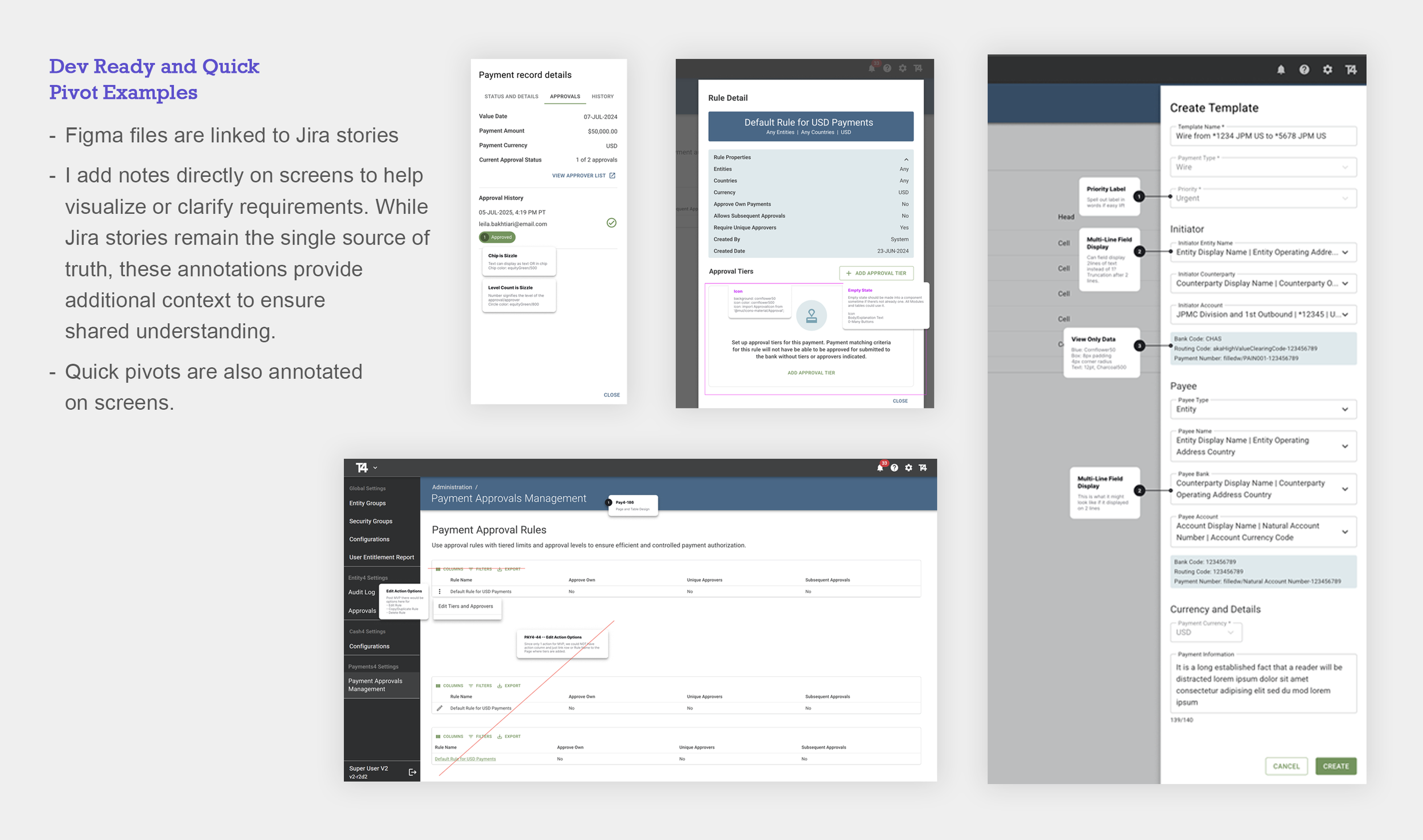Designing the Payments Module for a Treasury Management System (TMS)
Project Overview
Our goal was to evolve our Treasury platform into a complete TMS by building out a Payments module. This required not only meeting MVP business requirements, building an experience that would meet initial customer objectives but also delivering a workflow and UI that would feel modern while respecting familiar patterns for customers already using similar outdated systems.
Designing a payments module means creating a complex network of workflows and administrative controls. It’s not just “send a payment”, it’s enabling templates for efficiency, supporting free-form payments for flexibility, enforcing approval rules based on tiered amounts, managing approval groups, and ensuring every step aligns with security and compliance requirements.
Skills Used
Research | Visual Design | UX Design | Requirement Documentation
Research & Discovery
Competitive Analysis
I began by exploring the competitive landscape to understand both industry norms and potential differentiators.
This included:
Collecting screenshots and annotating examples of strong and weak design patterns.
Reviewing available product screenshots from competitor websites.
Downloading eBooks and attending webinars with live demonstrations for deeper insight.
The aim was twofold:
Identify effective solutions competitors use.
Understand user expectations from other platforms so we could balance innovation with familiarity.
Early Design Exploration
Using my research and our MVP requirements, I started exploring possible layouts and interaction models. I followed established design patterns in our platform, looking for small improvements we could test in this module and later apply platform-wide.
I met with our Product Owner (PO) and development leads to:
Evaluate early ideas.
Eliminate approaches with technical or usability concerns.
Improve promising concepts and brainstorm new ones based on discussions.
Stakeholder Collaboration
Our stakeholders brought unique value, many had either used TMS systems directly or worked in customer success roles for TMS companies.
In collaborative sessions, we:
Reviewed proposed workflows.
Discussed past frustrations with other solutions and their feature gaps.
Integrated their domain knowledge into design improvements.
From here, the PO refined detailed epics and user stories, while I aligned my designs with those stories. Meanwhile, the dev team mapped backend build strategies and technical dependencies.
Pre-Build Refinement
Before development began, we held a refinement session to finalize the MVP approach, making small tweaks for clarity and feasibility.
Development & Real-Time Iteration
The dev team progressed smoothly through stories, but we embraced flexibility:
On-the-fly adjustments through desk conversations, quick calls, or short recorded videos.
Front-end lead leveraged existing UI patterns to solve many issues without major design intervention.
MVP Launch & Continuous Improvement
The initial release was intentionally minimal, leaving room for enhancement based on user feedback.
Key follow-up activities included:
Internal Use & Demos: Since certain payment types were not yet available, the module is currently internal-only. We demo the module to customers for feedback.
Feedback Tracking: Using a 3rd-party AI-enabled system, we gather and bullet-point customer feedback from recorded demo sessions.
Ongoing Audit: I periodically audit the module to identify improvement opportunities and ensure the end-to-end experience works for different user personas.
Lessons Learned
Balance Familiarity & Innovation: Users expect certain flows; changing too much at once risks adoption friction.
Stakeholder Experience is Gold: Involving those who’ve “lived” in similar tools gave us early wins.
Flexible Collaboration Speeds Development: Real-time discussions and recorded walk-throughs helped us solve issues faster than formal tickets alone.
“All of the payment template and approval process is really attractive. I like the way it’s laid out.”
Next Steps
We’re actively working on:
Adding more payment types to enable customer adoption.
Continuing to improve the user experience based on internal, customer, and prospect feedback.
Expanding learnings from this project into broader platform improvements.






